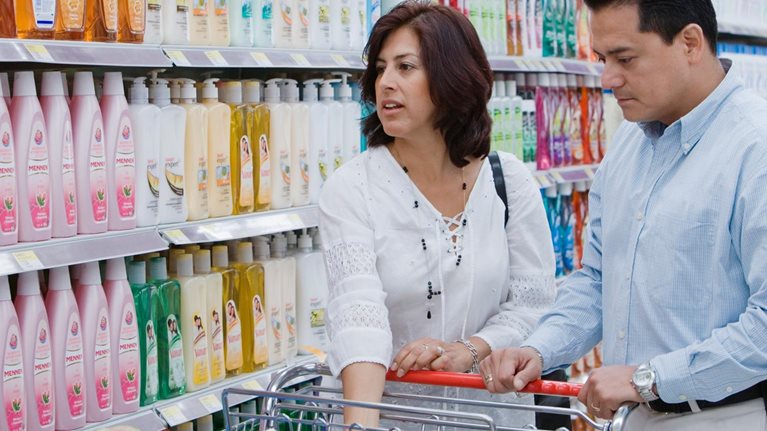Over the past half century, the consumer-packaged-goods (CPG) industry has achieved enviable growth in both revenue and shareholder returns. At first blush, continued growth seems a sure thing—after all, the burgeoning economies of emerging-market countries are fueling an unparalleled boom in global consumption. And given that global CPG companies are selling more of their products to more people in more parts of the world, shouldn’t revenue growth—and, with it, healthy returns—be theirs for the taking?
If only success were that simple. A look back at recent decades of developed-market based CPG companies shows that they have consistently managed to grow, but not always profitably. And today, a series of large-scale trends is causing industry upheaval, forcing companies in mature markets to make tough choices about where to play and how to win. Investment in emerging markets isn’t foolproof: growth, although strong, is uneven, with certain markets and categories far outpacing others. Severe resource constraints are causing volatility in commodity costs. Digital technologies are affecting every part of the value chain, and in sometimes unpredictable ways. New—and newly acquisitive—competitors are emerging. And regulatory risk is rampant as government exerts ever-greater influence over the industry.
Given how fundamentally these trends will transform the industry over the next decade, we believe the strategic choices that CPG manufacturers make in the next few years will be more consequential than those they’ve made in the recent past. Every company will respond to the trends differently. Some companies may choose to keep their focus on core franchises with the hope of delivering stable, even if not stellar, earnings; others may opt for more assertive but riskier moves. In this article, we discuss each of the aforementioned trends, the kinds of choices they will require companies to make, and the actions every company should take regardless of its specific strategic choices.

Completing a transformation in the consumer-goods industry
Changes and choices
In recent decades, CPG companies have posted better returns than other sectors. Between 1967 and 2012, the industry’s 7 percent annual growth in total return to shareholders (TRS) outpaced the S&P 500’s 6 percent. But it hasn’t been a smooth and steady road. In our analysis of the CPG industry since 1967, we see four distinct eras, with one in particular—the period from 1985 to 2000—accounting for the bulk of value creation (Exhibit 1). The years 1967 to 1985 marked a golden age of growth, a time when sales of food, beverages, and household and personal products soared. Americans doubled their consumption of soda (from an average of one serving a day to two), for example, and cheese (from half an ounce a day to a full ounce). However, revenue growth came at the expense of margins, which declined by almost 300 basis points.
In recent decades, the consumer-packaged-goods industry has seen four distinct value-creation cycles.

Margins shot up—largely thanks to declining input prices—during what we call the era of expansion (1985–2000), allowing CPG companies to finance forays into new global markets. A wave of mergers and acquisitions followed in the years 2000 to 2007, but the success of these deals was mixed; revenue increased but TRS growth dipped. Then, during the Great Recession and the subsequent recovery, the industry grappled with a tough economy and persistently high commodity costs, limiting both revenue growth and value creation.
How CPG companies fare in the current era remains to be seen: will they sacrifice margins for revenue, as they did during the golden age of growth? Will they be able to grow profitably, as they did between 1985 and 2007? But what’s already evident is that the industry is on the cusp of sweeping change, presenting companies with a range of strategic choices. We believe the five most influential changes, and their implications for CPG companies, are as follows.
Granular growth, globally
By 2025, a staggering 4.2 billion people will be part of the consuming class. For the first time ever, the number of people with discretionary income will exceed the number still struggling to meet basic needs—a phenomenon that may well be the biggest opportunity in the history of capitalism.1 Another golden age of growth could be in the making. Consumption growth, however, isn’t even; it’s happening much faster in certain categories and markets. Some emerging-market cities have higher growth potential than entire countries. In Shanghai, for instance, the skin-care category will grow three times as fast in absolute terms as in all of Malaysia, based on 2010–20 compound annual growth rate (CAGR).
This uneven growth presents tremendous potential for companies—whether they are multinationals or local players—to quickly become industry shapers, if they choose to play in the fastest-growing subcategories in the fastest-growing markets. For example, The Coca-Cola Company, recognizing Chinese consumers’ preference for pulpier juices, launched Minute Maid Pulpy—which became the company’s first billion-dollar brand developed for and in an emerging market. Local companies, too, are making winning choices: our research shows that in the fastest-growing CPG categories in China, Brazil, and Mexico, eight of the top fifty companies are headquartered in emerging markets. These local entities—companies like Mexico’s Grupo Bimbo—are venturing outside their home markets and skillfully leveraging their emerging-market know-how, favorable cost positions, and proximity to a rapidly expanding customer base. As a result, their sales growth in emerging markets (19 percent CAGR in the 2009–12 period) far exceeds that of US-based CPG companies (5 percent).
Emerging-market companies’ budding success on the global stage introduces a new element to strategic planning. We believe CPG companies should take a more data-driven approach to understanding how competitors will grow in each market, and how their own strategic positions will change as a result. They will then be able to predict critical inflection points for particular products in particular cities and regions. McKinsey research has found that consumption growth in each product category follows its own distinct variant of the classic S-curve pattern. Companies that invest just as a category enters the “hot zone” will likely generate the most value. Better insights into competitor evolution, and how it will affect the microeconomics of product categories in each country and globally, will become increasingly important.
Not all growth is coming from emerging markets; companies must identify and invest in pockets of growth in developed markets as well, particularly as growth in emerging markets slows. In the United States, for example, the spending power of certain demographic groups, such as baby boomers and Hispanics, is significant and growing. The “value” segment, which flourished during the recession, continues to appeal to a broad swath of consumers. These and other “niche” opportunities in developed markets can hold as much growth potential as entire countries. Colgate-Palmolive, for one, has launched products targeting Hispanics; P&G has introduced new products and brands to compete in lower price tiers.
No matter what investment decisions a company makes, one key to success will be its ability to allocate resources quickly to the businesses that will yield the highest returns.2 In our experience, companies often underestimate both how big a shift they need to make and how big a shift emerging-market players are already making. The growth of Anheuser-Busch InBev—from a national beer player in Brazil to the world’s biggest brewer and a top 5 CPG manufacturer in less than a decade—shows just how quickly the game can now change.
Volatile commodity costs
Profitability in the CPG industry is tightly linked to commodity costs. When CPG companies raise their prices to offset commodity-price hikes, as they did in the era of expansion, they enjoy strong returns. But when they aren’t able to pass on price increases to consumers, as was the case in the early 2000s, margins and TRS suffer.
Until recently, commodity costs have been trending up. Due to global consumption growth, the rising cost of new supply (the real cost of a new oil well, for instance, has doubled in the past decade), and the interconnectedness of resources (biofuels being one illustration), the spike in commodity prices in the past 10 years has undone the decline of the previous 100 years.3
CPG companies must prepare for continuing volatility in commodity costs. The standard deviation of the McKinsey Global Institute (MGI) commodity-price index is more than twice its historical average. And the majority of key CPG inputs are subject to supply risk, either due to concentration in only a few countries (for example, 75 percent of phosphate reserves are in Morocco); absolute shortages, as is the case with water; a lack of substitutes (for potash, for example); or low recycling rates (such as with tin). Furthermore, the prices of soft commodities could increase by 50 to 450 percent, given unpriced environmental externalities such as CO2 emissions and water withdrawals.4
Every CPG company must undertake a rigorous risk analysis—including an assessment of “tail” risks—for major commodities across its entire supply chain. It should come up with a productivity plan that exceeds the reasonable range of commodity-price increases by at least 200 basis points. It must then make choices about how to mitigate commodity risks. Some CPG manufacturers are vastly reducing or even eliminating parts of their portfolio that rely heavily on constrained commodities. Some are reformulating their product recipes and using substitutes (for example, high-fructose corn syrup for sugar), taking into account weight and manufacturing trade-offs. Others are pursuing procurement excellence through supplier collaboration or even vertical integration. Still others are experimenting with ways to drive a more “circular” economy—for example, through greater use of recycled materials—that yield cost benefits as well as environmental benefits.
And because commodity risk puts strong pressure on margins, companies must continually find margin-enhancing opportunities. Making operations more efficient is one such opportunity. Our analysis shows that when CPG companies undertake large-scale, cross-functional operations-improvement programs rather than one-off projects in isolated business units, they can boost productivity by 300 basis points. Kraft Foods and SC Johnson have recently achieved this kind of productivity gain. Better revenue management is another margin-enhancing opportunity. Some companies are deploying an arsenal of revenue-management and pricing tools: for instance, they’re investing in sophisticated revenue-management processes and IT, hiring revenue-management experts, and making smaller but more frequent changes to pricing and promotions to reduce the risk of competitive followership.5
Transformative technologies
A recent MGI report identifies 12 technologies that could have massive, economically disruptive impact between now and 2025.6 Of the 12, we see three that could potentially transform the CPG sector and underpin a golden age of growth or an era of expansion: the mobile Internet and, in the longer term, the “Internet of Things” and 3-D printing.
MGI projects that by 2025, 50 percent of retail purchases will be made on a mobile device. That estimate could prove low, given that many product categories are quickly migrating from the physical store to online (Exhibit 2). The online market has shown itself to be supply driven: Zappos.com’s offer of free shipping and no-hassle free returns, for instance, lured consumers who previously never considered buying shoes online. The same could happen in grocery, where companies like Peapod and Amazon.com are making bold moves. Peapod’s mobile sales in 2012 were close to $150 million, up 50 percent from 2011. And Amazon, which plans to expand its AmazonFresh business to as many as 20 urban areas in 2014, could shake up grocery retail the same way Wal-Mart Stores did in the 1990s.
Digital technology is shaping all markets and categories.

To benefit from the mobile Internet, companies will need to make careful choices about where to place their bets and how big those bets will be. Which of their products should they sell online? How, if at all, should they engage with Amazon? (Some CPG players are putting their best people on Amazon-dedicated account teams. CPG companies will, of course, need to weigh the risks and trade-offs of partnering with Amazon, including the potential for channel conflict and the loss of control over the “virtual shelf.”) How much of their marketing budget should they shift to mobile media? Digital marketing, including mobile, now accounts for 22 percent of global ad spending and could grow to 27 percent by 2017, according to eMarketer.
The mobile Internet is already prevalent; the Internet of Things—the embedding of networked sensors in physical objects—is just beginning to make waves. It’s not a stretch to imagine that in a few years CPG companies will be using sensors to track consumers’ use of products (for example, sensors that can be ingested to measure caloric intake), customize marketing messages (as in shelf displays that change depending on who is standing in front of them), or revolutionize their manufacturing and logistics processes.
3-D printing, or additive manufacturing, is already in use in the CPG sector, with 3-D-printed jewelry and toys being sold in online marketplaces. Other CPG categories—apparel, furniture, sporting goods—may soon follow. In the near term, product designers can use 3-D printing to reduce prototyping time from weeks to minutes; in the longer term, it will open up mass-customization opportunities.
Taking full advantage of these transformative technologies will require companies to invest in building the relevant capabilities, including digital-content creation, mobile marketing, and advanced data analytics. CPG manufacturers should closely follow the evolution of these technologies and foster a test-and-learn mind-set within their organization, building an experimentation “engine” that can quickly scale up successful pilots.
Merger mania—with a global twist
A new M&A wave seems to be gathering strength—and this time it’s global. As we said earlier, emerging-market companies are expanding aggressively and becoming global winners. Our analysis shows that since 2007, Brazilian companies have made 13 CPG deals valued at more than $500 million each; Chinese companies have completed 7 such deals, and Mexican companies another 7. Most of these deals were in categories in which global or regional scale is an advantage, such as snacks, nonperishable beverages, paper products, personal care, and tobacco. (US-based companies completed 51 deals of comparable size over the same period.) The combined 27 major CPG deals originating in Brazil, China, and Mexico represent a huge jump from the 5 deals those three countries completed in the 2000–06 time frame (3 for Brazil, 2 for Mexico, and none for China).
Even after recent mergers, many CPG categories remain fragmented both within and across countries. Companies will need to make choices about how best to capture synergies in both developed and emerging markets. How will they position themselves to be the acquirer rather than the acquired? How will they avoid paying too much for acquisitions—a mistake many companies made during the M&A wave in 2000–07? How—and how aggressively—will US manufacturers lower their cost base to compete with emerging-market players?
We see three potential growth archetypes: global giants, from both developed and emerging markets, will consolidate categories that benefit from economies of scale (such as those previously mentioned as well as apparel and footwear); regional leaders will concentrate on value segments in categories where scale is less of an advantage (such as food, paper products, and dairy); and small, agile innovators will introduce new business models and capture premium niches.
In any case, CPG companies would do well to build their M&A capabilities. They should identify and carefully assess potential targets or partners in emerging markets. And they should be financially prepared to pounce on an M&A opportunity when it arises—specifically, by reducing their debt and loading up on cash.
Regulatory risk and the expanding role of government
Government’s influence on the consumer sector is increasing rapidly and will only continue to do so, given the ubiquity of CPG products and the role they play in people’s daily lives. The financial impact of regulation on the industry won’t be trivial: extended producer responsibility regulation, for example, which has been implemented in Europe, could cost the US CPG industry upwards of $7 billion per year according to prior McKinsey research.
Some industry leaders are taking action before government—or the public—demands it. Wrigley, a division of Mars, took its Alert Energy caffeinated chewing gum off the market in order to give the Food and Drug Administration time to pass regulations on caffeine-enhanced food and drinks.7 Coca-Cola is partnering with groups in Mexico to invest in an effort to increase recycling of materials for sustainable packaging. CPG companies and industry associations have formed coalitions to tackle issues such as front-of-package labeling, tax policy, and waste management.
CPG companies must decide what stance to take toward government. Will they take a leading role on one or more topics, or will they instead take a wait-and-see position and be prepared to act quickly when regulations change? Our prediction is that more companies will choose to be proactive and collaborative, following the example set by Unilever, whose Sustainable Living Plan outlines a set of ambitious social and environmental goals for the company.
Regardless of its regulatory strategy, each company must earn the “social license” to be in business. It must become aware of the issues and the potential impact of regulation on its business and on the overall industry, particularly in three areas: economic, environmental, and health-related. Best-practice companies regularly review emerging regulatory issues and plan for plausible scenarios, give regulatory issues a place on the agenda at both the top-management level and the board level, and ensure that exposure to government affairs is part of leadership development and job rotation for high-potential managers.8
The CPG industry will look very different in just a few years. It will be a bigger industry, with much larger global players and more competition from up-and-coming companies in emerging markets. Resource constraints and scale will lead to very different value-chain structures. New technologies will play an increasingly central role in business, as will regulation and government affairs. Already, these changes are compelling CPG companies to rethink how they do business and pursue growth. Companies that fail to adapt to these changes—or that make suboptimal choices—will be left behind by more thoughtful, action-oriented competitors.


